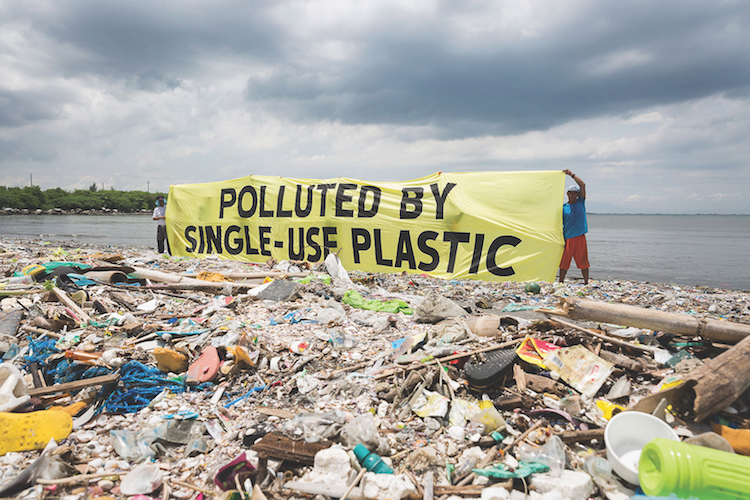Despite claims about hemp plastic’s ability to clean oceans and limit landfill growth, the truth is less universally positive.
If current plastic consumption patterns persist, by 2050, the oceans will contain more plastic than fish by weight, according to a World Economic Forum report. In the meantime, plastics will continue to leach into the human body, and while scientists debate the certainty of toxicity studies determining that the Bisphenol A (BPA) in plastics are carcinogenic, the FDA will continue to review BPA’s safety. And of course, plastic consumption will increase petroleum consumption, wreaking havoc on the environment and geopolitical stability.
Clearly, widespread plastic use is dangerous to humans and the planet — but is hemp-based plastic, widely touted as a less toxic and biodegradable material, truly a viable alternative? When hemp’s market size, funding limitations, technological innovations and biodegradability are considered, the solution seems far from a silver bullet.
The Market Size of Bioplastics
The bioplastics market accounts for approximately 1.1 million metric tons of product, with an expected growth rate of 17.5 percent by 2025. Much of this demand is for compostable bags, plastic bottles and food service disposables like cutlery and to-go ware.
Currently, corn and soy represent the bulk of the bioplastic market, with corn being the primary feedstock that provides the cellulose and oils necessary for bioplastics. Both corn and soy are heavily subsidized in the U.S., creating massive production possible at artificially low prices.
The economies of scale for corn and soy make it more affordable to produce bioplastics that can be cost competitive to petroleum-based plastics, but at this stage in the market, it would be difficult for hemp to compete.
Trey Riddle, CEO of Sunstrand, a fiber processing facility in Louisville, KY states, “If [hemp] were to have some sort of unique performance characteristics, then of course that is always intriguing and kind of game-changing, but if it just performs the same as the other options, then it really just comes down to a cost issue.”
Jim Happ, President of Labcon North America, a disposable labware products manufacturer who has collaborated with bioplastics suppliers, states, “Nobody wants to pay more. They want the benefits of having a bioplastic, but they don’t want to pay more than conventional plastics. [The price] needs to be equal to or not 10 percent more than conventional plastics. People will pay a small premium, but they are not going to pay double.”
Happ stated that petroleum-based polypropylene pellets fluctuate between $1.00-$1.15/pound. If hemp plastics were to compete with petroleum plastics, the price per pound would need to be no more than $1.27/pound. According to Mark Linday at Green Springs Technologies, current market prices for hemp plastic are $2.35/pound.
Hemp Cellulose vs Hemp Oil
Though hemp bioplastics can be produced from either cellulose in the fibers or from oil in the seed, it is likely that hemp plastics will primarily be produced from fiber because of the higher value of hemp oil, says Riddle.
But beyond price, technological issues exist for using the hemp oil or any plant oil as a polymer. Fossil fuels produce long fatty acid chains that are necessary for creating popular single-use plastics. Plants also produce fatty acids, but they are short chains that need to be converted into long fatty acid chains. The process is energy-intensive and expensive, which makes bioplastics more expensive.
However, Riddle states, hemp hurd could be effective as filler in plastics. “At a 2:1 hurd [ratio], at significantly less cost, hurd has a lot of opportunity as filler in plastics as well,” says Riddle. “Putting hemp in polymers, that is a no brainer.”

Photo Daniel Müller
Funding Barriers
While federal regulations have prohibited the growth in the hemp supply needed to reduce costs, federal regulations that view hemp as a dangerous substance have also limited funding.
For example, a company called Pure Hemp Technology has developed a Continuous Countercurrent Reactor (CCR) that uses hemp’s lignin polymers to create terephthalic acid, which makes up 70 percent of the feedstocks in plastic bottles. CEO Ed Lehrburger states that their “CCR technology is ready… but we are waiting for funding to scale up to the first small commercial demonstration scale.”
Biodegradable Challenges
While hemp is touted for its biodegradability, the true potential is unknown. When hemp is used as a composite plastic today, it is blended with other polymers and additives that reduce the recyclability and biodegradability potential. If hemp were used as a polymer on its own, it may be biodegradable, but may not have a useful market.
“You can’t have a water bottle that will dissolve in one year, it’s got to be a water bottle that will dissolve in 20 years,” Lehrburger says. “So the industry needs to conduct a lot of R&D, as far as the biodegradability in terms of certain plastic products used.”
In addition, oftentimes, people believe that bioplastics rapidly biodegrade in landfills; however, that is not the case. For bioplastics to rapidly biodegrade, they must be placed in industrial scale composters under specific pressure and heat. These composters degrade material within 180 days, but unfortunately are uncommon in the United States and often become contaminated with non-compostable plastics.
The Need for Fiber Markets
Ultimately, to have a successful hemp plastic industry, the hemp fiber industry must thrive. Today, there is a market for high-value hemp plastics like automotive composites, and the more the grain and cannabinoid markets grow, the cheaper the fiber will become. However, the plastics market for low-value products like water bottles is years away, if not decades. To compete in this market, we must increase the scale of production so that hemp cellulose outcompetes the price of cellulose in corn, soy and other agricultural commodities. But most of all, it must be cost competitive with petroleum plastics.


